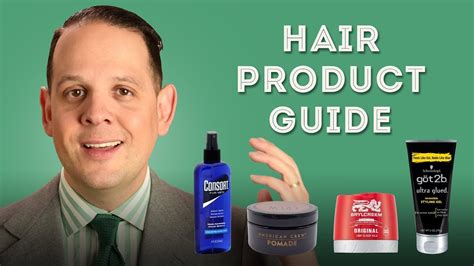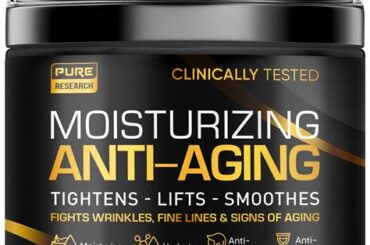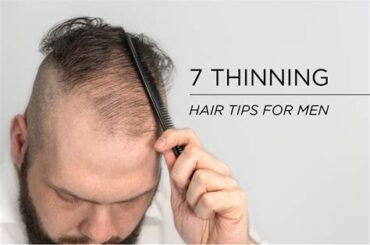Having a good hair day can make all the difference in how we feel about ourselves. But with so many hair products available on the market, it can be overwhelming trying to figure out which ones are right for your specific hair type and styling needs. In this blog post, we will discuss how to choose the right hair products for your hair type and style. We’ll cover the importance of understanding your hair type, determining your styling needs, and identifying any concerns you may have with your hair. We’ll also dive into researching hair product ingredients, consulting with hair professionals, and exploring product reviews and recommendations. Understanding product labels and claims, testing products for compatibility, considering personal preferences, and evaluating cost-effectiveness and budget will also be explored. By the end of this blog post, you’ll have the tools and knowledge to choose the best hair products for you.
Understanding Your Hair Type
Understanding your hair type is crucial when it comes to finding the right products and styling techniques that work for you. There are generally four basic hair types: straight, wavy, curly, and coily. Straight hair is typically smooth and shiny, wavy hair has a slight S-shaped pattern, curly hair forms a ringlet pattern, and coily hair has a tight zig-zag pattern. It’s important to know which category your hair falls into so that you can tailor your hair care routine accordingly.
Once you’ve identified your hair type, you can then determine the specific needs of your hair. For example, straight hair may require more frequent washing to prevent it from looking oily, while curly or coily hair may need extra moisture and hydration to prevent dryness and frizz. Understanding your hair type allows you to choose the right shampoos, conditioners, and styling products that cater to your specific needs.
By understanding your hair type, you can also learn how to work with its natural texture and embrace its unique characteristics. Whether you want to enhance your natural waves, define your curls, or add volume to straight hair, knowing your hair type will guide you in choosing the most suitable styling methods and tools. This knowledge can help you achieve the looks you desire while maintaining the health and integrity of your hair.
Overall, understanding your hair type is the first step to building a successful hair care and styling routine. It allows you to make informed decisions about the products you use and the techniques you apply, ultimately leading to healthier, more manageable hair that looks and feels its best.
Determining Your Hair Styling Needs
When it comes to determining your hair styling needs, it’s important to first consider what type of hair you have. Whether you have straight, wavy, curly, or coily hair, each type requires different styling techniques and products. Understanding your hair type is the first step in determining your styling needs.
Next, consider the specific concerns you have with your hair. Whether it’s frizz, dryness, lack of volume, or any other issue, identifying your hair concerns will help you choose the right styling products to address those issues.
Researching hair product ingredients is also crucial in determining your styling needs. Certain ingredients may be beneficial for your hair type, while others may cause damage or exacerbate existing concerns. Knowing what to look for and what to avoid will guide you in selecting the best products for your hair.
Finally, consulting with hair professionals can provide valuable insight into your hair styling needs. Whether it’s a hairstylist, trichologist, or dermatologist, seeking professional advice can help you make informed decisions about the products and styling techniques that are best for your hair.
Identifying Your Hair Concerns
Identifying your hair concerns is the first step in creating a personalized hair care routine that addresses your specific needs. Whether you struggle with dryness, frizz, breakage, or scalp issues, knowing exactly what your hair concerns are will help you determine the most effective products and treatments for your hair.
Take note of any recurring issues you experience with your hair, such as excessive shedding, lack of shine, or difficulty maintaining a style. These symptoms can provide valuable clues about the underlying concerns affecting the health and appearance of your hair.
It’s also helpful to consider any external factors that may be contributing to your hair concerns, such as environmental damage from sun exposure or harsh weather conditions. By identifying the root causes of your hair issues, you can better address them with targeted solutions.
Once you have a clear understanding of your hair concerns, you can begin exploring suitable hair care products and treatments that specifically target those issues. This proactive approach will help you achieve healthier, more manageable hair that meets your unique needs.
Researching Hair Product Ingredients
When it comes to finding the right hair products for your specific needs, one of the most important steps you can take is researching the ingredients in the products you are considering. Understanding what ingredients are in your hair products can help you determine if they are the right fit for your hair type and concerns.
As you start your research, it’s important to identify any specific ingredients that may be beneficial or harmful to your hair. For example, if you have dry, brittle hair, you may want to look for products that contain moisturizing ingredients, such as argan oil or coconut oil. On the other hand, if you have a sensitive scalp, you may need to avoid products that contain fragrances or harsh detergents.
In addition to looking for specific ingredients that may benefit your hair, it’s also important to understand the purpose of each ingredient in a product. For example, keratin is often included in hair products to help strengthen and repair damaged hair, while silicones are often used to provide a smooth, shiny finish.
Finally, don’t forget to research any ingredients that you should avoid based on your hair type or concerns. For example, if you have fine hair, you may want to steer clear of products that contain heavy oils or butters that can weigh your hair down.
Consulting with Hair Professionals
When consulting with hair professionals, it’s important to be prepared with specific questions and concerns about your hair. Whether you’re visiting a salon for a major change or seeking advice on how to improve the health of your hair, the expertise of a professional can be incredibly valuable.
Before your appointment, take some time to consider what you want to achieve. Are you looking for a new style, color, or treatment? Do you have specific issues such as dryness, damage, or thinning hair that you’d like to address? Make a list of these concerns to discuss with your hair professional.
During your consultation, don’t be afraid to ask questions and seek recommendations. A knowledgeable hair professional can provide personalized advice based on your hair type, concerns, and styling needs. They may also offer insights into your hair’s compatibility with certain products and treatments.
Ultimately, consulting with a hair professional can help you make informed decisions about your hair care routine, styling choices, and overall hair health. Their expertise can guide you towards the most suitable products, treatments, and techniques to achieve your hair goals.
Exploring Product Reviews and Recommendations
When it comes to finding the right hair products, one of the best ways to make an informed decision is by exploring product reviews and recommendations. With the overwhelming number of options available in the market, it can be challenging to choose the right products for your specific hair concerns and styling needs. This is where product reviews and recommendations from other consumers and hair professionals can be incredibly helpful.
Reading through product reviews can give you valuable insights into how a particular hair product has worked for others. You can learn about the pros and cons, as well as real-life experiences with the product. This can help you gauge whether the product is suitable for your hair type and concerns.
In addition to product reviews, seeking out recommendations from friends, family members, or hair professionals can provide you with personalized suggestions based on your specific needs. Whether it’s a recommendation for a shampoo that works wonders for curly hair or a styling product that helps combat frizz, tapping into the experiences of others can narrow down your choices.
Furthermore, exploring online forums and communities dedicated to hair care can also be a great way to discover new products and get insights from a diverse group of individuals with varying hair types and concerns. Engaging in discussions and asking for recommendations can lead you to hidden gems that may not be widely advertised.
Understanding Product Labels and Claims
When it comes to shopping for hair products, understanding the product labels and claims is crucial for making an informed decision. With so many different products on the market, it can be overwhelming to decipher the information on each label. However, taking the time to understand what the labels and claims mean can help you choose the right products for your hair needs.
One important thing to look for on product labels is the list of ingredients. Understanding what ingredients are in a product can help you determine if it aligns with your hair concerns and preferences. For example, if you have dry hair, you may want to look for products that contain moisturizing ingredients such as argan oil or shea butter.
In addition to ingredients, it’s also important to pay attention to the claims that a product makes. For example, if a product claims to be sulfate-free or color-safe, it’s important to understand what those claims mean and how they may impact your hair. Educating yourself on common hair product claims can help you choose the right products for your specific needs.
Ultimately, understanding product labels and claims is essential for finding the best products for your hair. By taking the time to research and educate yourself on the information provided on product labels, you can make more informed decisions and ultimately achieve healthier, more beautiful hair.
Testing Hair Products for Compatibility
When it comes to finding the right hair products, it’s important to consider their compatibility with your hair type and concerns. Whether you have curly, straight, fine, or thick hair, testing out different products can help you determine which ones work best for you.
Before testing out any new product, it’s essential to consider your specific hair concerns such as dryness, frizz, or damaged hair. This will help you narrow down the products that are designed to address your specific hair needs.
When testing out new hair products, it’s important to pay attention to how your hair reacts to the product. Does it make your hair greasy, dry, or frizzy? This will help you determine the compatibility of the product with your hair type.
In conclusion, testing out different hair products for compatibility is crucial in finding the right products for your individual needs. By considering your hair type, concerns, and reactions to the products, you can make informed decisions about the products that work best for you.
Considering Your Personal Preferences
When it comes to choosing the right hair products, it’s essential to take into account your personal preferences in order to make the best decision for your hair care routine. Each person’s hair is unique, and what works for one individual may not work for another. By considering your personal preferences, you can ensure that the products you choose align with your specific needs and desires.
Whether you prefer natural ingredients, specific scents, or certain textures, taking the time to identify what you prefer in hair products can help you narrow down your options and make informed choices. If you have sensitive skin or allergies, it’s important to prioritize products that cater to those concerns.
Additionally, it’s crucial to think about the level of maintenance you’re willing to commit to. Some individuals may prefer low-maintenance products that require minimal effort, while others may enjoy a more intricate hair care routine.
Ultimately, when considering your personal preferences, it’s important to take into account your lifestyle, values, and overall goals for your hair care routine. By doing so, you can select products that align with what matters most to you, leading to a more satisfying and effective hair care experience.
Evaluating Cost-Effectiveness and Budget
When it comes to evaluating the cost-effectiveness and budget of hair products, it’s important to consider both the short-term and long-term expenses. Cost-effectiveness is about comparing the price of a product to its quality and performance. Some products may have a higher upfront cost but last longer, while others may be cheaper initially but need to be replaced more frequently. It’s important to do a cost-benefit analysis to determine the best value for your money.
Another thing to consider when evaluating cost-effectiveness is the overall impact on your budget. Budgeting for hair products is essential for maintaining healthy hair without overspending. It’s important to prioritize your hair care needs and allocate a reasonable amount of your budget to purchasing quality products that will meet your specific requirements.
Additionally, it’s important to consider the long-term benefits of investing in quality hair products. While they may seem expensive at first, they can actually save you money in the long run by reducing the need for frequent salon visits or preventing damage that may require costly repairs. By considering the cost-effectiveness and budget of hair products, you can make informed purchasing decisions that will benefit both your hair and your wallet.
Ultimately, evaluating the cost-effectiveness and budget of hair products requires careful consideration of the initial price, long-term benefits, and overall impact on your finances. By taking the time to assess these factors, you can make smart choices that will lead to healthy, beautiful hair without breaking the bank.





